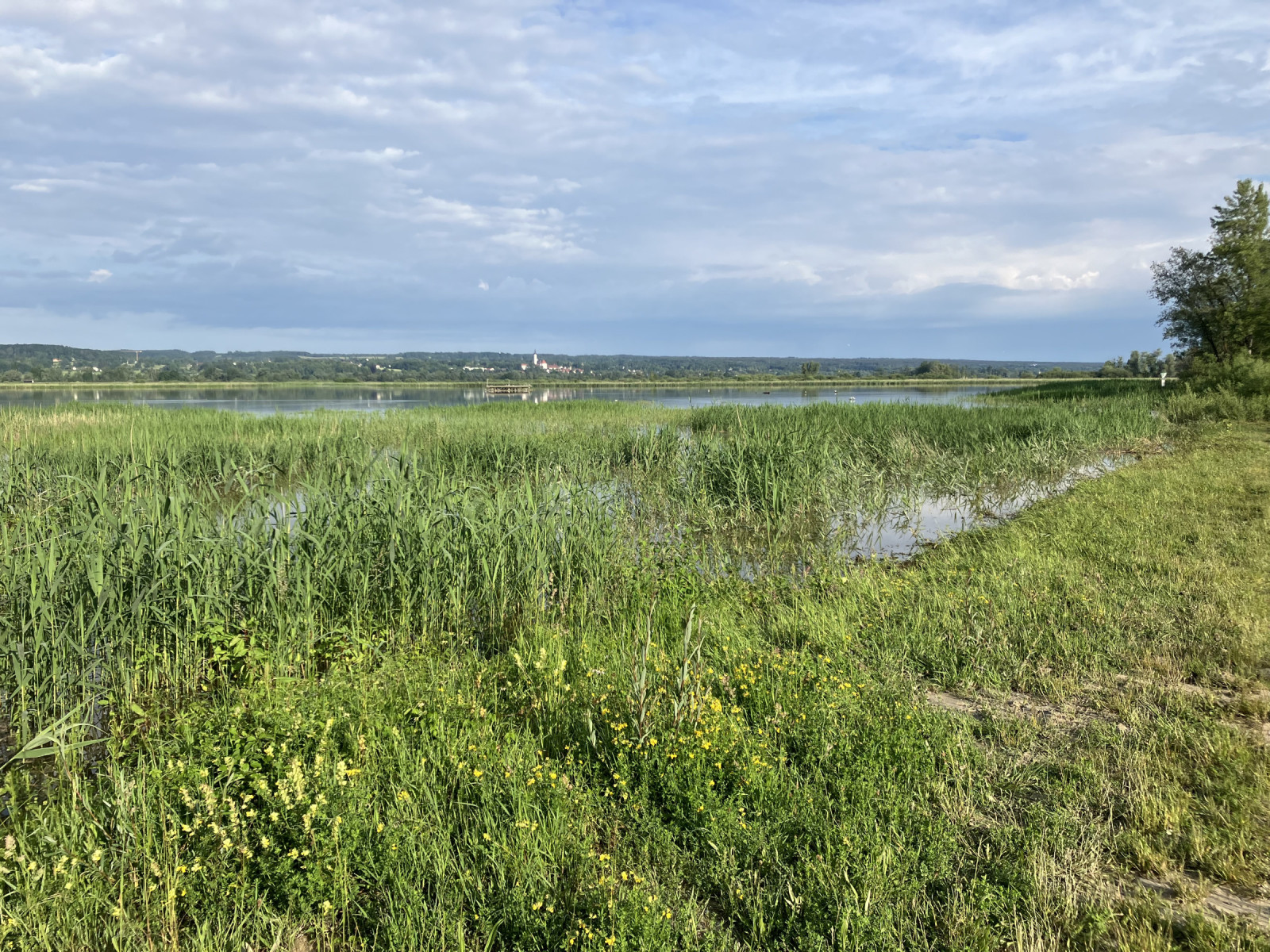Beschreibung
Vogelfreistätte Ammersee-Südufer (the southern Ammersee bay) is a nature reserve that offers a broad variety of habitats. The open water, reedbelts, sandbanks, alluvial forests als well as the open meadow landscape closeby attract lots of different bird species. Providing the opportunity for exciting spottings all year round. Around 110 species nest in the area, including Flußseeschwalbe, Kiebitz and Braunkehlchen. During spring and autumn many migrating bird species rest here, such as Kampfläufer, Bruchwasserläufer or Stelzenläufer. Sometimes also rarities can be spotted. In winter lots of waterfowl gathers in the area. In total over 320 different species have been observed here. The meadows south of the lake "Raistinger Wiesen" are also a great birding area. Note: some paths are closed during the breeding season.
Details
Zugang
Vogelfreistätte Ammersee-Südufer is located 50 km southwest of Munich and 75 km south of Augsburg. The bay can be observed from the "Ammerdamm", which provides view on the "Binnensee", as well as from Dießen and Aidenried. Click on a P in the map to get directions to a parking spot.
Access by public transport: You can easily get to Dießen with the Ammerseebahn, which runs every hour from Weilheim, Geltendorf or Augsburg. From there it is a few hundred meters to the observation platform.
Aidenried and the inland lake at Ammerdamm can be reached by bus 9653 from Herrsching or Weilheim. The stops are Aidenried Abzweigung and Vorderfischen respectively. However, the bus only runs a few times a day and not at all on Sundays and public holidays. Alternatively, you can get off the Ammerseebahn in Raisting and walk about five kilometers through the Raistinger Wiesen, which is also very worthwhile, to Ammerdamm.


